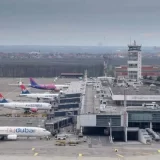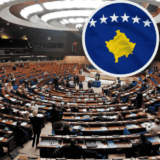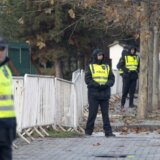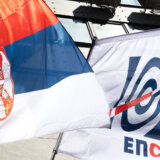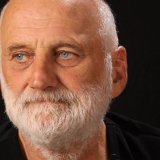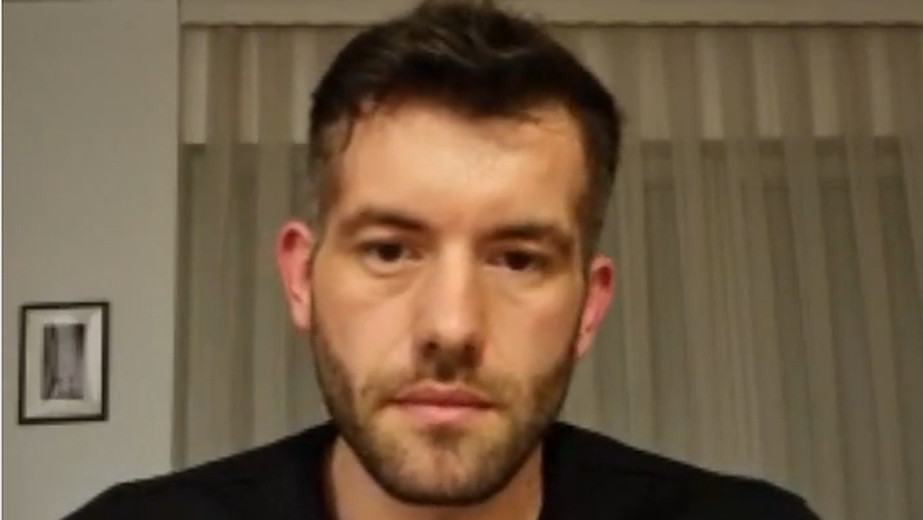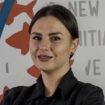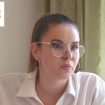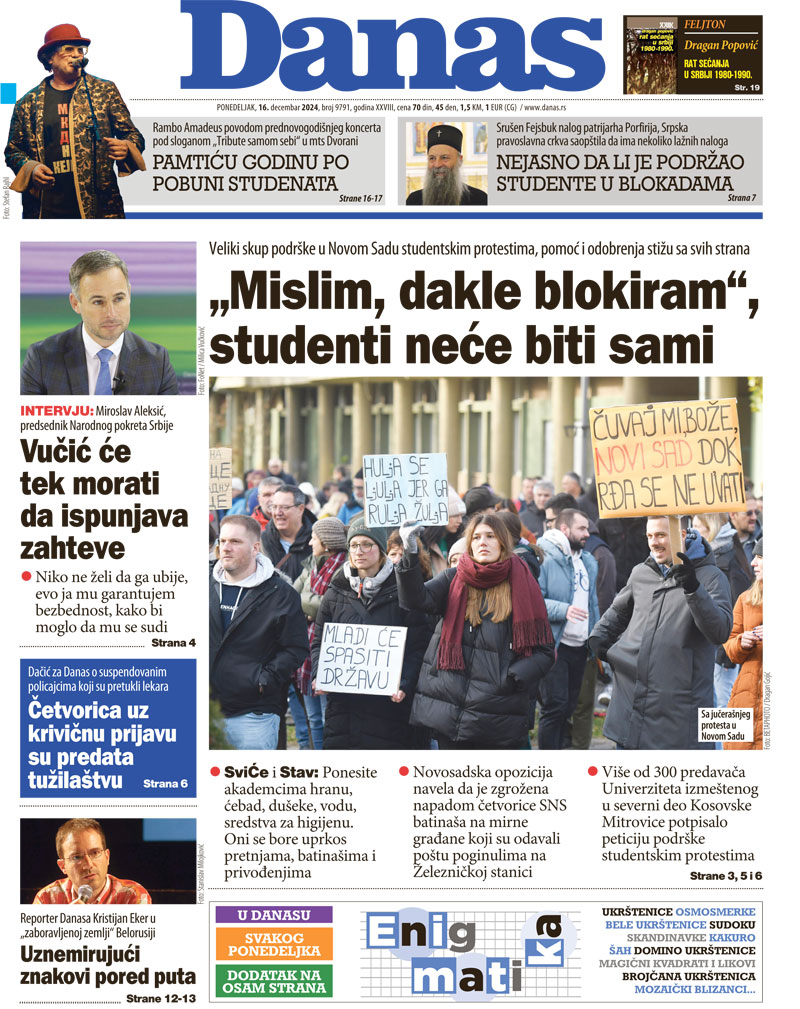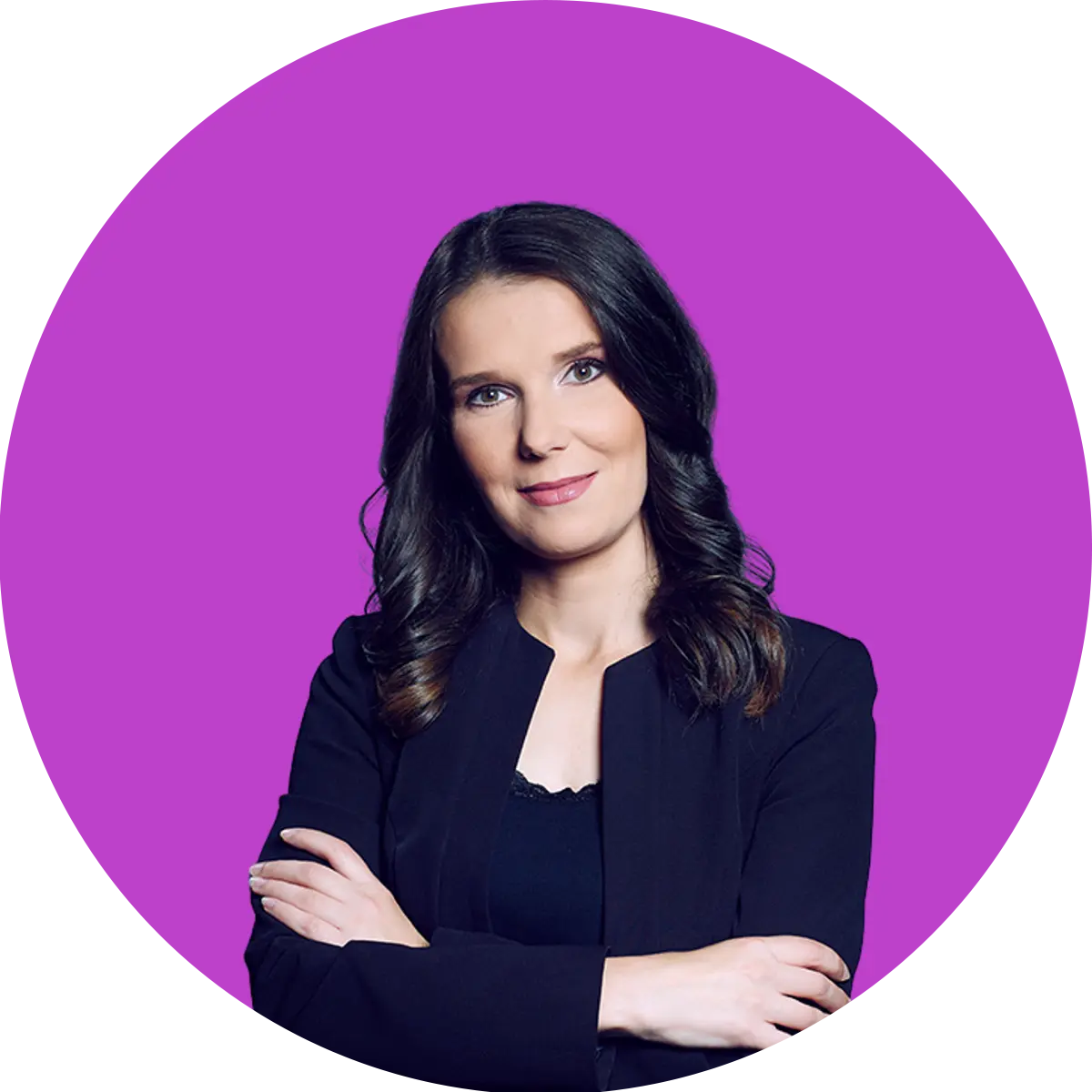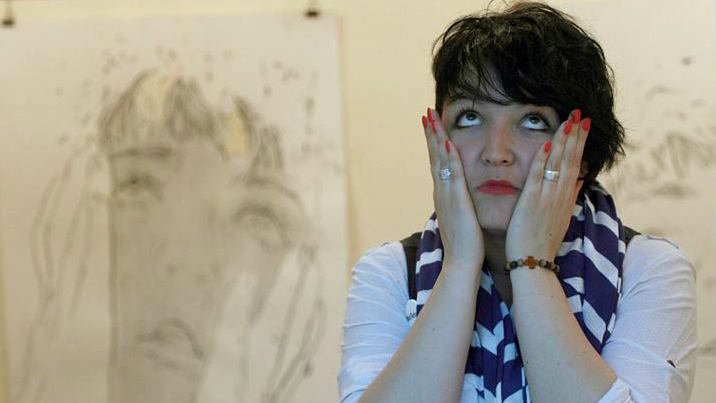
Već dugo smo lutke na koncu kojim upravljaju političke elite iz Beograda i Prištine, a pre svega iz velikih svetskih prestonica: Brisela, Londona, Berlina, Vašingtona, Moskve.
Mi već više od dve decenije ne odlučujemo o svojim sudbinama. Zato će se sudbina onih ljudi koji zaista ovde žive (nebitno da li su Srbi, Albanci, Bošnjaci, Goranci, Romi, Jevreji) odlučivati u nekim drugim centrima moći koji uopšte ne poznaju ni mentalitet, ni kulturno i duhovno nasleđe, niti realne muke ljudi koji ovde vekovima, jedni uz druge, žive i opstaju. Čiji je ovo prostor nikada nije zavisilo i nikada neće zavisiti od toga ko vlada teritorijom, već koliko ko od nas u duši nosi svaki pedalj ove zemlje. Onaj ko ima genetički kod kulturno-duhovnog nasleđa, i sposoban je da ga prenosi iz generacije u generaciju, vlasnik je ove zemlje. Možda je Kosovo zaista drugi Jerusalim – smatra Miljana Dunđerin, likovna umetnica i direktorka Privatnog kulturnog centra „Akvarijus“.
Dunđerin nakon završenih studija psihologije, upisuje Fakultet umetnosti u Kosovskoj Mitrovici. Iza sebe ima 13 samostalnih izložbi i preko 50 grupnih izložbi u zemlji i u inostranstvu (Italija, Francuska, Austrija, Bosna i Hercegovina, Slovenija).
Slike su joj uvrštene u mnoge selekcije savremenog stvaralaštva Srba na Kosovu i Metohiji. Učesnica je više likovnih kolonija u zemlji i u inostranstvu. Objavljivala radove u mnogim publikacijama i u međunarodnim tematskim zbornicima iz oblasti psihologije i umetnosti. Nagrađivana je za likovno stvaralaštvo.
Ona je osnivačica i umetnička direktorka u Privatnom kulturnom centru „Akvarijus“ koji u Kosovskoj Mitrovici radi od 2015. godine. Osnivačica i direktorka kreativne škole slikanja „Mali atelje“. Urednica je likovnog programa „North city jazz & blues“ internacionalnog festivala. Saradnica i organizatorka mnogih kulturnih manifestacija u regionu.
Živi i radi u Kosovskoj Mitrovici.
Dunđerin govori za Danas, u okviru projekta „Druga strana Kosova“ koji ima za cilj da približi kosovskoj i srpskoj javnosti informacije koje nisu plasirale političke elite, ni s jedne strane, već nezavisni građani, kao i povezivanje kosovske i srpske kulturne scene koja je nedovoljno zastupljena u medijima.
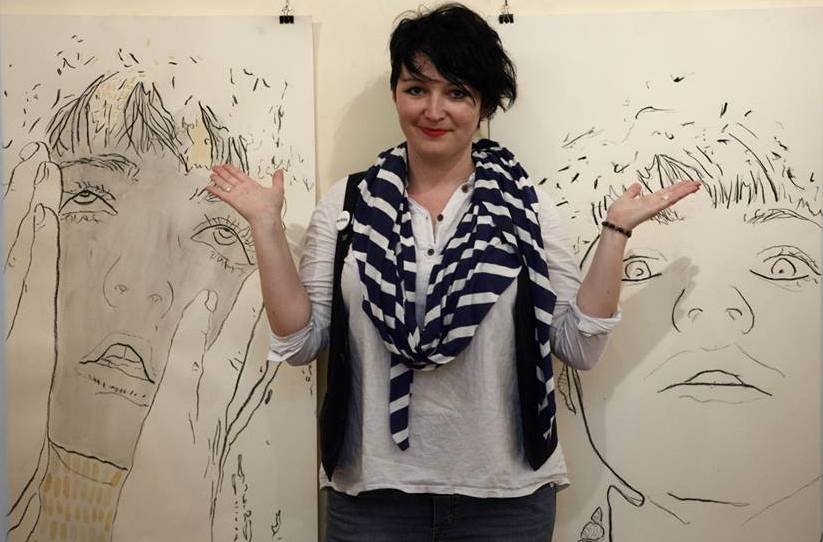
- Pitanja novinara Danasa:
Šta bi, prema Vašem mišljenju, trebalo najpre i prioritetno učiniti kako bi se odnosi Srbije i Kosova normalizovali?
– Kosovo i Metohija nije nikada bilo dnevno-političko pitanje, već pitanje koje zadire i u istorijsko, duhovno, kulturološko biće više naroda koji, vekovima, na ovoj teritoriji žive. Vremenom, na ovoj teritoriji, može se zapaziti nekoliko različitih slojeva kulture, jezika, identiteta – pre svega srpski, pa potom turski, i, u novijoj istoriji albanski – koji su pokušavali da izbrišu jedan drugi, nadvladaju, ali uvek bezuspešno: svi oni se, međusobno, prepliću i čine bogatstvo i lepotu ovog prostora. Tu nije reč o mitu – Bogorodica Ljeviška i Sinan Pašina džamija mogu se rukom opipati, oni su stvarni i realni, jedni do drugog, u istom gradu (Prizrenu).
Suviše smo mali da bismo mogli da budemo slobodni. Već dugo smo lutke na koncu kojim upravljaju političke elite iz Beograda i Prištine, a pre svega iz velikih svetskih prestonica: Brisela, Londona, Berlina, Vašingtona, Moskve. Mi već više od dve decenije ne odlučujemo o svojim sudbinama. Zato će se sudbina onih ljudi koji zaista ovde žive (nebitno da li su Srbi, Albanci, Bošnjaci, Goranci, Romi, Jevreji) odlučivati u nekim drugim centrima moći koji uopšte ne poznaju ni mentalitet, ni kulturno i duhovno nasleđe, niti realne muke ljudi koji ovde vekovima, jedni uz druge, žive i opstaju.
Čiji je ovo prostor nikada nije zavisilo i nikada neće zavisiti od toga ko vlada teritorijom, već koliko ko od nas u duši nosi svaki pedalj ove zemlje. Onaj ko ima genetički kod kulturno-duhovnog nasleđa, i sposoban je da ga prenosi iz generacije u generaciju, vlasnik je ove zemlje. Možda je Kosovo zaista drugi Jerusalim.
Šta mislite o procesu normalizacije koji trenutno sprovode vlasti u Prištini i Beogradu?
– Ovo je vreme u kome političari nikada više nisu pričali, a manje se gledali u oči. A posle 20 godina situacija je mnogo gora – ljudi su još više podeljeni, još veću mržnju osećaju među sobom, broj umrlih od raka je mnogo veći od broja poginulih u ratu, gradovi su ružniji nego što su bili, narod živi u zamrznutom konfliktu; a zlo, i duh rata, i dalje opstaje u svima nama, okruženi smo još gorim političkim nasiljem. „Proces normalizacije“, o kojem se toliko priča, dug je, mnogo dug i naporan proces, za svakog čoveka koji je odlučio da ostane živi na Kosovu, pogotovo ako je pripadnik srpske zajednice.
Da li je moguće da će proces normalizacije okončati političke elite koje su bile aktivne tokom sukoba 1990-ih?
– O Kosovu i Metohiji ne mogu odlučivati ljudi sa ograničenim rokom trajanja, a naročito ne duhovi prošlosti. Nažalost, svim elitama (političkim, kulturnim, naučnim), koje uglavnom ne žive na Kosovu, odgovara stanje „zamrznutog konflikta“, a narod koji tu živi – ispašta.
Kojim temama se bavite, šta obrađujete ili kritikujete kroz Vašu umetnost i stvaralaštvo?
– Ako ste srpski umetnik sa Kosova i Metohije, od vas se očekuje da se bavite pre svega tradicionalnim, istorijskim, religijskim temama. Tom „zadatku“, nadam se na savremen i originalan način, odgovorila sam u prošlosti svojim ciklusom portreta „Nemanjići“, koji su proputovali svet, nažalost veoma često bez mene, budući da imam pasoš koordinacione uprave za koji ne važi bezvizni režim, kao što važi za druge građane Srbije.
Kontekst u kojem se prepliću i prelamaju mnogi identiteti, u tradicionalnom značenju te reči (etnički, religiozni, pre svega), a gde je sukob i nerazumevanje Drugog istorijska konstanta i dominanta, inspirisao me je da ga sagledam i interpretiram iz psihološkog i umetničkog ugla, o čemu svedoče moji najnoviji ciklusi „Ja sam sela“ i „Ja sam Kosovka devojka“. Predmet moga višegodišnjeg interesovanja i proučavanja jeste akcentovanje relacije ruralno-urbano u dehumanizovanim društvima na Balkanu, srpsko-albanski odnosi, kao i preispitivanje (savremenog) ženskog pogleda na svet.
Kažite nešto više o kreativnoj školi slikanja „Mali atelje“, kao i o likovnom programu internacionalnog festivala „North city jazz & blues“ koji uređujete.
– „Mali atelje“ je moja duša, rad sa decom je po meni najsmislenija stvar. Dečija psihologija je na drugom mestu mog životnog interesovanja zbog toga sam i završila najpre studije psihologije, pa tek onda uplivala u polje umetničkog obrazovanja. „Mali atelje“ pod tim nazivom postoji od 2015. godine, i predstavlja za mene najvažniji segment našeg kulturnog centra. Do sada je kroz ovu radionicu prošlo više od 200 dece različitih uzrasta.
Rad članova „Malog ateljea“ prezentuje se svaka tri meseca u izložbenom prostoru galerije, a često i gostujemo u drugim mestima. Nedavno su radovi „Malog ateljea“ prezentovani i u Rusiji.
Ova školica nastala je na osnovu plana i programa koji je osmišljen u saradnji sa profesorom dr Velimirom Karavelićem, našim istaknutim vajarem, univerzitetskim profesorom i jednim od retkih metodičara likovne nastave na ovim prostorima. Njegov rad i njegovu ličnost veoma cenim i poštujem. Radionice su zamišljene tako da svako dete ima priliku da se likovno i umetnički izrazi, u skladu sa svojim interesovanjima, potpuno slobodno, te da svoju kreativnost razvije, bilo da je reč o formi ili sadržaju. Takođe, nenametljivo, deca dobijaju i osnovne informacije o slikarskom zanatu, a stiču i osnovna saznanja o istoriji, teoriji umetnosti i biografijama likovnih umetnika.
U radu sa decom uključeni su i gostujući predavači, poznati umetnici i stvaraoci koji se, između ostalog, bave i metodikom nastave.
Na kraju svake godine polaznicima ove edukativno-kreativne umetničke radionice, koji su redovno pohađali nastavu, dodeljuju se diplome koje osmišljavaju i crtaju sami članovi „Malog ateljea“. A kolektivno deca odlučuju o tome kome će pripasti godišnja nagrada.
„North city jazz & blues“ je internacionali muzički festival koji traje već 17 godina. Zvuči pomalo nestvarno, ali je upravo Kosovska Mitrovica maja svake godine glavno središte džeza i bluza u čitavom regionu, zahvaljujući ovom festivalu koji okuplja najveća svetska imena iz ovih muzičkih oblasti. Ponosna sam što sam deo te priče i teško je napraviti pandan u likovnom programu, ali se trudimo da svake godine kao prateći program festivala posetiocima prikažemo i druge oblasti umetnosti.
Da li postoji saradnja između albanskih i srpskih umetnika u polju kulture i umetnosti u kojima aktivno delujete?
– Većina saradnje između umetnika na Kosovu zapravo je rezultat pojedinačnih interesa određenih NVO struktura koje dobijaju, a potom dodeljuju ogromne sume novca, da bi se stvorio privid pomirenja, privid Kosova kao multietničkog i multikulturnog društva. Iza te saradnje kriju se politički koncepti i ideje koje diktiraju donatori, i koje žive u teoriji, a ne u praksi. Takva „saradnja“ veća je između umetnika iz Prištine i umetnika iz Beograda, nego između ljudi koji žive i stvaraju na Kosovu i Metohiji. Iskrene i prave saradnje, koje bi podrazumevale istinsku umetničku razmenu, retkost su.
Priština je dobro razvila sva polja savremene umetnosti i kulture, postoje i određeni rezultati, ali uglavnom je reč o projektima koji su finansirani iz inostranih budžeta. Pitanje je da li bi to bilo tako da nema tih donatora. Ostali gradovi na Kosovu u izuzetno su teškom položaju kada je reč o kulturi, u širem ili užem smislu te reči.
- Pitanja Borke Božović, direktorke Galerije “Haos”
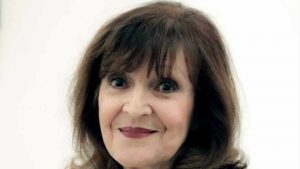
Da li imate ikakve subvencije od lokalne samouprave, resornog Ministarstva kulture i informisanja ili nekog pojedinačnog donatora? Privredno odgovornog preduzeća/firme ili pojedinca? Ako imate u kojem je to procentu?
– Uglavnom ne. Naš kulturni centar je samofinansirajuće, ekonomski samoodrživo privatno preduzeće, koje saradnju sa donatorima iz zemlje i inostranstva ostvaruje samo u izuzetnim slučajevima, kada potencijalni projekti ne narušavaju zacrtani programski koncept. Verujemo da sloboda govora i umetničkog izražavanja može da se ostvari jedino potpunom finansijskom nezavisnošću. Bilo da su donatori domaći ili iz inostranstva, kada je kultura u pitanju, da bi dobili finansijska sredstva morate se uklopiti u unapred zadatu političku, ideološku agendu, a mi to ne želimo. Pogotovo sada, i ovde, na Kosovu i Metohiji. Jer ovde se gotovo sve dešava uz političko nasilje, sa svih strana. Izvorne prihode ostvarujemo na mnoge načine: prodajom ulaznica za neke umetničke programe, prodajom slika i ostalih umetničkih dela, članarinom od škola slikanja i glume, prodajom sezonskih karata, radom kafe-kluba…
Da li je vaš kulturni centar Akvarijus specijalizovan za određene programe ili ih pravite ad hoc, prema zahtevima trenutka, mogućnostima ili traženjima pojedinih umetnika?
– Pre svega, mi ne živimo u Beogradu, a pogotovo ne u Berlinu ili u Parizu, nego u Kosovskoj Mitrovici. Ne treba da zaboravite da severni deo ovog grada broji svega 30.000 stanovnika. Osim toga, svi objekti institucija kulture ostali su u južnom delu Mitrovice. Državni (opštinski) kulturni centar koristi kapacitete infrastrukture severnog dela grada, i snalaze se kako umeju. Takve okolnosti, pogotovo činjenica da su Srbi posle 1999. godine, izuzev severnog dela Kosovske Mitrovice, proterani iz urbanih sredina, uslovljava i kvantitet, i kvalitet, i programsku koncepciju bilo koje organizacije koja želi da se bavi kulturom i umetnošću. Ono zbog čega smo mi opstali toliko godina u ovom poslu jeste, sa jedne strane, nasleđe kulturnog miljea stare Mitrovice (ovaj grad nekad je bio značajno središte, pre svega muzičke kulture), a, sa druge strane, što srpski deo Univerziteta u Prištini danas funkcioniše upravo u Kosovskoj Mitrovici, sa više od 10.000 studenata. Te činjenice uslovljavaju naš programski koncept. U određenoj meri mi vršimo i funkciju studentskog kulturnog centra, pa su studenti proizvođači više od 50 procenata programa u „Akvarijusu“, njihove pozorišne predstave su na našem stalnom repertoaru, prve samostalne izložbe otvaraju upravo kod nas, prve objavljene knjige promovišu u našem prostoru, kao i prve solističke koncerte, itd. Drugi segment rada tiče se rada sa decom i omladinom, kroz školu slikanja „Mali atelje“ i pozorišnu trupu „Mali teatar“. Tek je treći segment rada posvećen zrelim i ostvarenim stvaraocima, bilo da su sa Kosova i Metohije, iz regiona, ili iz sveta. Naravno, često smo prinuđeni da programe prilagođavamo adekvatnom trenutku, zbog nestabilne političke situacije. Ali, i pored toga u „Akvarijusu“ su do sada gostovali umetnici iz Nemačke, Francuske, Velike Britanije, Sjedinjenih Američkih Država, Italije, Belgije… Pri tome, jedan deo programa realizujemo u sopstvenoj produkciji.
Pretpostavljam da pored likovnih/vizuelnih projekata imate i književne večeri, muzičke kamerne programe ili neke radionice, s obzirom da ste Akvarijus nazvali Kulturnim centrom. Kako onda planirate program? Na godišnjem nivou? Za duži period ili po kvartalima? Dodala bih na ovom mestu da je jako važno imati dobar program i to unapred za bar dve godine, jer onda se možete posvetiti traženju subvencija da biste ih realizovali.
– Ne trošimo vreme na traženje subvencija. Ako ih i ima, oni koji su zainteresovani za saradnju, sami nas pronalaze. Moto „Akvarijusa“, od samog početka, je da „nema umetnosti bez slobode i pobune“, a svesni da ni umetnost, kao ni život, nisu mogući bez ljubavi, mi želimo pre svega da ostanemo mesto stvaralačkog susreta (afirmacije, preispitivanja, polemike), prostor gde se, u vremenu jednoumlja i zaglupljivanja, stvara i održava kritičko mišljenje, i prenosi i neguje ljubav. Zbog toga je, uostalom, i prva sezona nosila naziv „Sloboda.“, druga „Umetnost.“, a prethodna, treća po redu, „Ljubav.“ Ova nosi naziv „Vizija“. Budući da je vreme u kojem živimo obeleženo dominantnim ateizmom, amoralnošću, plutokratijom, političkim i ekonosmkim totalitarizmom, nestajanjem gotovo svih humanističkih vrednosti u koje je čovek nekada verovao, uredništvo „Akvarijusa“ odlučilo je da ove godine, u svojim programima, afirmiše pre svega stvaraoce čiji život i delo, između ostalog, pokazuju da kategorije slobode i ljubavi, i ideje humanosti i dalje, kao ključne, egzistiraju u kulturnom, umetničkom, naučnom i filozofskom diskursu. Prednost su, tako, prilikom odabira i selekcije, ove godine dobile ličnosti koje su svesno odlučile da svoj život provedu u naoko skromnim odajama umetnosti, umesto naoko raskošnim dvorcima zabave, koje su se opredelile za stvaranje umetničkih dela koja su temelj budućnosti, a ne za proizvodnju umetničke robe koja zadovoljava trenutne zahteve tržišta i ideologije novca. Uverena sam da je takvo stvaralaštvo, zapravo stvaralaštvo budućnosti.
Sarađujete li sa sličnim institucijama, galerijama, kulturnim centrima iz regiona ili sa onima iz Prištine? Znate, ubeđena sam, da kultura najpre uspostavlja mostove među različitim etničkim grupama i narodima. Volela bih kada bi se takva želja i tendencija osećala među poslenicima kulture i umetnicima.
– Umetnost je univerzalnog karaktera, kakav bih ja stvaralac bila i kako bih vodila ovaj kulturni centar, ako bih bila ograničena etničkim, konfesionalnim ili bilo kojim drugim podelama u društvu. Ali od mene ne zavisi da li i drugi umetnici razmišljaju na ovaj način. Pojedine kulturne institucije prepoznali su naš koncept i žele da sarađuju sa nama. Između ostalog sarađivali smo i sarađujemo, i sa Domom kulture Gračanica, Književnim društvom Kosova i Metohije, ali i sa Teatrom La MaMa iz Njujorka, pozorišnom trupom Tulumus iz Pariza…
Imamo odličnu medijsku podršku, a naše programe najavljuju i prate medijske kuće od Leposavića do Prištine, ali i Beograda, te inostrani mediji. Nama nije potrebna pres-konferencija, jer novinari svakako dolaze na naše programe, i na licu mesta prave priču, razgovaraju sa gostima i izveštavaju javnost o tome. Naravno, imamo i našu internet stranicu, kao i fejsbuk stranicu.
- Pitanja sa društvenih mreža:
Da li je umetnost ograničena u ograničenom okruženju ili je upravo ovakvo okruženje pogodno tlo za bujanje umetnosti?
– Ograničenost je uvek uslov za prekoračenje, bar kada je u pitanju umetnost. Prirodni tok jednog umetnika je da, ukoliko mu se postavi granica, tu granicu želi da sruši. Ko to meni može da odredi tri kvadratna metra i pet kubika vazduha na zemlji? Pa prirodno je da mi pripadaju, pitanje je samo izbora. Problem je u tome što danas imamamo sve manje umetnika, pa nema ko gore pomenute granice da ruši.
U kojoj meri neizvesnost po pitanju egzistencijalnog opstanka, pozitivno ili negativno, utiče na likovno ali i bilo koje drugo umetničko stvaralaštvo?
– Vrelo inspiracije, suština je esencijalne potrebe stvaralaštva, potrebe da preživljenu prošlost kroz sadašnji jezik pretočiš u budućnost. Zbog toga smatram da su neizvesnost i adrenalin, kao i sva ljudska gorčina življenja, dobar okidač za svakog stvaraoca.
Kako da bolje upoznamo kosovsku kulturu i umetnost?
– Potrebno je, za početak, doći na Kosovo, jer ovde mnogo toga ima da se vidi. Uostalom, doživljaj umetničkog može se izazvati i primiti, najpre golim okom.
***
ENGLISH VERSION
- Questions asked by Danas:
What, in your opinion, should be prioritized first and foremost in order to normalize relations between Serbia and Kosovo?
– Kosovo and Metohia has never been a daily political issue, but it is an issue which affects historical, spiritual, cultural being of several nations who have lived on this territory for centuries. As time has been passing, several different segments of culture, language and identity – first of all Serbian, then Turkish and in recent history Albanian ones – which try to eliminate and overwhelm each other but never with success have become noticeable on this territory: all of them are interwoven and they make wealth and beauty of this region. This is not about the myth – the Church of Our Lady of Ljeviš and the Sinan Pasha Mosque can be touched by the hand, they are true and real, they stand side by side in the same city (Prizren).
We are too small to be free. For long time we have been the puppets controlled by the political elites from Belgrade and Pristina and specially from major world capitals: Brussels, London, Berlin, Washington, Moscow. We have not shaped our destinies for more than two decades. Therefore, the destiny of those people who really live here (no matter if they are Serbs, Albanians, Bosniaks, the Gorani, Roma, Jews) will be shaped in some other power centres which do not know anything about the mentality, cultural and spiritual legacy or woes of the people who have lived and survived here in coexistence for centuries?
The ownership of this land has never depended and will never depend on the fact who rules the territory, but on the fact who feel every inch of this land closer to their heart. The owner of this land is the one who has genetic code of the cultural and spiritual legacy and who is capable of passing it on to the next generations. Kosovo really might be another Jerusalim.
What do you think about the process of normalization that is currently being led by the authorities in Pristina and Belgrade?
– This is the time when the politicians have never talked more and looked each other in the eye less. And after twenty years the situation is much worse – people are still divided, they feel still greater hatred for each other, the number of those who died from cancer is much bigger than the number of those killed in the war, the cities are still uglier than they used to be, people live in the frozen conflict, and the evil and the spirit of the war are still persistent in all of us, we are surrounded by still worse political violence.
„The process of normalization“ which is so much talked about is a long, very long and tiresome process for every man or woman who decided to stay in Kosovo, specially if he or she is a member of the Serbian community.
Is it possible that the normalization of relations between Kosovo and Serbia might be achieved by the political elites that were active during the 1990s conflicts?
– People who are transient and specially ghosts of the past cannot make decisions about Kosovo and Metohia. Unfortunately, all elites (political, cultural and scientific ones), who mostly do not live in Kosovo, are satisfied with the state of „frozen conflict“ and people who live there is the one who is suffering.
What topics do you deal with and what do you criticize through your art and work?
– If you are a Serbian artist from Kosovo and Metohia, you are expected to predominantly deal with traditional, historical and religious topics. I hope that I fulfilled that „task“ in modern and original way in the past through the series of portraits „Nemanjići“ which travelled the world, but unfortunatelly very often without me because I have the passport of the coordination authority which is not the subject to visa free regime like the passports of other Serbian citizens.
The context in which many identities in traditional sense for that word (first of all ethnic and religious ones) are interwoven and reflected and where the conflict and misunderstanding of the one who is different from you are a historical constant and dominant factor, has inspired me to perceive and interpret it from psychological and artistic point of view, which is witnessed by my most recent series „I Sat“ and „I Am a Kosovar Girl“. Putting the accent on the rural-urban relations in the dehumanized societies at the Balkans, Serbian-Albanian relations and the review of the (modern) female world-view has been the subject of my interests and study for several years.
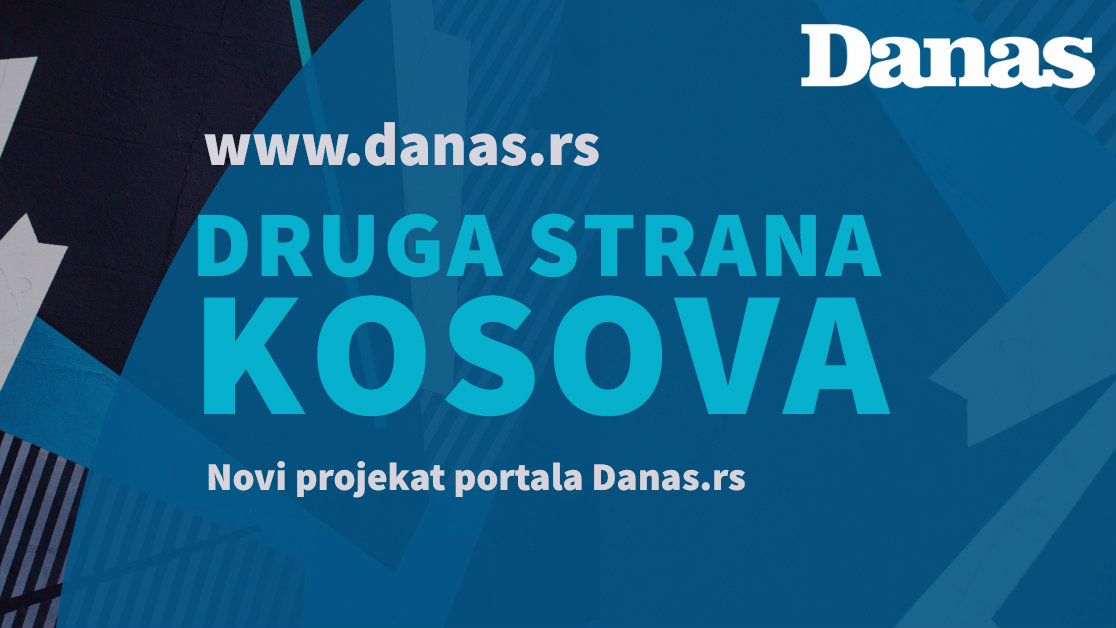
Tell us something about the creative school of painting the Small Atelier and the painting program of the international festival „North city jazz & blues“ which you arrange.
– The Small Atelier is my soul – in my opinion, the work with children is the most meaningful thing. Child psychology is my second most important lifelong interest and that was the reason why I graduated from the Faculty of Psychology first and only afterwards I got into the field of the artistic education. The Small Atelier has existed under that name since 2015 and in my opinion, it is the most significant segment of our cultural center. So far, more than 200 children of different ages attended this workshop.
The work of the members of the Small Atelier is presented every three months in the exhibition hall of the gallery and also we are often guests in some other places. The works of the Small Atelier have been recently presented in Russia.
This small school came into existence according to the plan and program which had been created in cooperation with Professor Velimir Karavelic, PhD, our prominent sculptor, professor at the University and one of few methodological experts in painting lessons in this region. I appreciate and honour his work and personality very much. The workshops are organized in such a way that all children have the opportunity to express themselves completely freely through painting and art according to their interests and to develop their creativity regarding both form and content. Children also unobtrusively get the basic information on painting skills and they also acquire knowledge about history, theory of art and biography of painters.
Visiting lecturers, well-known artists and creators who are interested in, among other things, the methodology in teaching are included in the work with children.
At the end of every year the participants of this educative and creative artistic workshop, who have attended regularly their lessons, are awarded diplomas designed and drawn by the members of the Small Atelier themsleves. Children decide collectively who will receive the annual prize.
„North city jazz & blues“ is the international musical festival which has taken place for 17 years. It sounds a bit unreal, but Kosovska Mitrovica becomes the main centre of jazz and blues in the region in May every year thanks to this festival which gathers the greatest names in these musical domains. I am proud of being a part of that story and it is difficult to find its counterpart in painting program, but every year we do our best to present to the visitors other artistic forms within the accompanying program of the festival.
Do Albanian and Serbian artists cooperate in the domain of culture and art in which you are actively involved?
– Most of cooperation between the artists in Kosovo is actually the result of the individual interests of certain NGOs structures which receive and then give large amounts of money to create a semblance of reconciliation, a semblance of Kosovo as the multiethnic and multicultural society. That cooperation is the cover for the political concepts and ideas which are dictated by the donors and which exist in theory but not in practice. Such „cooperation“ is greater between the artists from Pristina and the artists from Belgrade than between people who live and work in Kosovo and Metohia. Genuine and true cooperation which would mean the real artistic exchange is a rarity.
Pristina has developed fairly well all domains of contemporary art and culture, there are certain results, but these are predominantly projects financed from the foreign budgets. The question is whether the situation would be the same if there were no such donors. Other cities in Kosovo are in extremely difficult position regarding culture in broad and narrow sense.
- Questions asked by Borka Bozovic, director of the Chaos Gallery:
Do you receive any subsidies from the local self-management, the relevant Ministry of Culture and Information, some individual donors, companies/enterprises or some individuals? If you do, what is the percentage of it?
– Mostly, we don’t. Our cultural center is a self-financing, economically self-sustaining private enterprise, which cooperates with the donors from the country and abroad only in the exceptional cases, when the potential projects do not threaten the program concept which has been defined in advance. We believe that freedom of speech and artistic expression can be achieved only through complete financial independence. Whether the donors are from the country or abroad, when it comes to culture, you have to adapt to the predetermined political, ideological agenda in order to get financial resources and we do not want it, specially now and here in Kosovo and Metohia, because almost everything that happen here is followed by the political violence from all sides. We generate source revenues in many ways: by selling tickets for some art programs, selling paintings and other artwork, selling season tickets, through the membership fee for the schools of painting and acting, the work of the coffee club…
https://www.instagram.com/p/BweuPZXJA06/
Is your cultural center the Aquarius specialized for the specific programs or you design them ad hoc, depending on the moment, capabilities and the requests of some artists?
– First of all, we do not live in Belgrade, and particularly not in Berlin and Paris, but in Kosovska Mitrovica. Don’t forget that 30,000 people live in the northern part of the city. Besides that, all cultural institutions have remained in the southern part of Mitrovica. The state-owned (municipial) cultural center uses the capacity of the infrastructure of the northern part of the city and they manage as best they can. The quantity, quality and program concept of any organization which wants to deal with culture and art are conditioned by such circumstances, specially by the fact that after 1999, Serbs were expelled from the urban areas, except from the northern part of Kosovska Mitrovica. The reason why we have survived for so many years in this work is the heritage of the cultural milieu of old Mitrovica (this city was once a significant center, specially of musical culture) on the one hand and the fact that Serbian part of the University of Pristina operates today exactly in Kosovska Mitrovica with more than 10,000 students on the other hand. Our program concept is conditioned by these facts.
To some extent, we also serve as the student cultural center, so the students are the producers of more than 50 percent of the program in the Aquarius, their theater performances are on our permanent repertory, their first solo exibitions are opened here, they promote their first published books and hold their first solo concerts in our rooms, etc. The second segment is related to the work with children and the youth through the school of painting the Small Atelier and theatre troupe the Small Theatre . It is only the third segment of the work dedicated to mature and accomplished creators, whether from Kosovo and Metohia or from the region and the world. Of course, we are often forced to adapt the program to the suitable moment due to the unstable political situation. But in spite of that fact, so far, the artists from Germany, France, Great Britain, the United States, Italy, Belgium, etc. were guests in the Aquarius. We realize one part of the program within our own production.
I assume that in addition to painting/visual projects you also organize literary evenings, music chamber programs or some workshops, since you called the Aquarius the Cultural Center. How do you plan the program – annually, quarterly or in the long run? I would add at this point that it is very important to have good programs determined for at least two years in advance because you can then dedicate yourself to looking for the subsidies in order to realize them.
– We do not waste our time looking for subsidies. If there are those who are interested in cooperation, they find us on their own. The motto of the Aquarius from its very beginning has been that ‘there is no art without love and rebellion’ and since we are aware that neither art nor life is possible without love, we want to continue to be, above all, the place of a creative encounter (affirmation, overview, discussion), the place where the critical opinion is formed and maintained and where love is fostered and passed on at the time of narrow-mindedness and making people stupid. By the way, that is the reason why the first season was called the Freedom, second one the Art, and the previous one, the third in a row, the Love. This current one is called the Vision. Since the times we live in is marked by the dominant atheism, immorality, plutocracy, political and economic totalitarism, disappearance of almost all humanistic values people once beleived in, the Aquarius editorial decided to affirm this year in its programs first of all the creators whose life and deed among other things show that the cathegories of freedom and love and ideas of humanity still exist in cultural, artistic, scientific and philosophical discourse as the most important ones. So, this year, in the process of choosing and selecting the priority was given to persons who had deliberately decided to spend their life in seemingly modest chambers of art rather than in the seemingly luxurios entertainment castles, who had chosen to create art works that were the foundation of the future and not to produce art goods that met the current demands of the market and supported the ideology of money. I am convinced that such creativity is actually the creativity of the future.
Do you cooperate with similar institutions, galleries, cultural centers from the region or Pristina? I am convinced that above all culture makes bridges between different ethnic groups and nations. I wish such desire and tendency prevailed among cultural workers and artists.
– Art is unique by its very nature. What a creator would I be and how would I run this cultural center if I were limited by the ethnic, religious divisions in the society or by divisions of any other kind. But whether other artists think in this way does not depend on me. Some cultural institutions have recognized our concept and they want to cooperate with us. We cooperated and still cooperate with, among others, the Cultural Center Gracanica, the Literary Society of Kosovo and Metohia as well as with La MaMa Theatre from New York, theatre troupe Tulumus from Paris…
We have strong media support and our programs are announced and followed by the media from Leposavic to Pristina as well as from Belgrade and by the foreign media. We do not need press conference because journalists attend our events and they get the stories on the spot, they talk with our guests and inform the public about that. Of course, we also have our web page in addition to Facebook profile.
- Questions posted on the social media:
Is the art limited in the limited environment or such an environment is just suitable for the development of art?
– Limitation is always the precondition for crossing the limit, at least when we are talking abour art. The natural course of an artist is that if the limit is set to him/her, he/she will seek to remove it. Who can give me three square metres and five cubes of air on the land? Well, they naturally belong to me and it is only the matter of choice. The problem is that the number of artists is decreasing and there is nobody who can remove the above mentioned limits.
How much does the uncertainty regarding the survival affect positively or negatively painting and other forms of the artistic creativity?
– The well of inspiration is at the core of the essential need for creativity, of the need to transform the experienced past into the future through the current language. Therefore, I consider the uncertainty and adrenalin as well as all human bitterness of living a good trigger for every creator.
How can we learn more about Kosovar culture and art?
– You should come to Kosovo to begin with, because there are many things here which are worth seeing. After all, the experience of the artistic can be provoked and received by the naked eye above anything else.
Pratite nas na našoj Facebook i Instagram stranici, ali i na X nalogu. Pretplatite se na PDF izdanje lista Danas.


